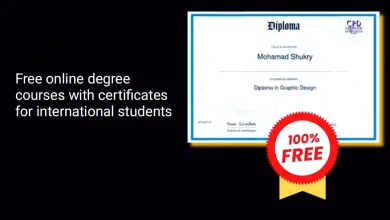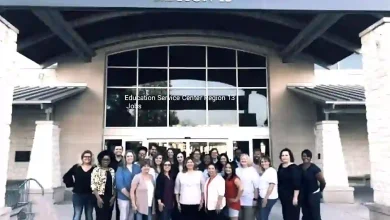The Philosophy of Technology in Education
Introduction
Table of Contents
The philosophy of Technology in education has become an increasingly important part of our lives and this is no less true in education. In recent years, there has been increasing interest in using technology to improve learning outcomes. However, there is a growing debate about the potential negative impact of technology on education.
This article will explore the philosophy of technology in education. It will begin by defining the terms “technology” and “education” and discuss the various ways technology can be used in education. The essay will then examine the promises and dangers of technology in education, drawing on the work of philosophers, educators, and technologists. Finally, the essay will provide some recommendations for using technology in education in a thoughtful and ethical way.

What is Technology?
The word “technology” can be defined in different ways. In general, it refers to the application of knowledge and skills to solve problems and make life easier. Technology can be used to create new products and services, improve existing ones, and automate tasks.
In the context of education, technology refers to the use of electronic devices and software to support learning. These may include computers, tablets, smartphones, interactive whiteboards and educational games.
What is Education?
The word “education” can be defined in many ways. In general, it refers to the process of acquiring knowledge, skills and values. Learning can take place in a formal setting, such as a school, or in an informal setting, such as at home or at work.
In the context of this article, education refers to the formal process of learning that takes place in schools. It includes both the content taught and the methods used to teach it.
How Can Technology Be Used in Education?
Technology can be used in education in many ways. It can be used:
- Deliver content: Technology can be used to deliver content to students in a variety of ways, including online courses, video lectures and interactive simulations.
- Support collaboration: Technology can be used to support collaboration between students and teachers. This can be done through online discussion forums, group projects and virtual classrooms.
- Assess learning: Technology can be used to assess student learning in a variety of ways, including online quizzes, formative assessments, and summative tests.
- Personalized learning: Each student’s education can be personalized with the use of technology. This can be accomplished by offering students various learning resources, exercises, and assessments based on their particular requirements and interests.
- Promote creativity and innovation: Technology can be used to promote creativity and innovation in learning. This can be done by giving students opportunities to use technology to create new products, solve problems and explore new ideas.
Unlocking the Potential of Higher Education
The Promises philosophy of Technology in Education
Technology has a lot of promise in education. Some of the most common include:
- Increasing access to education: Technology can help increase access to education by enabling students to learn from anywhere in the world.
- Personalized learning: Technology can help personalize learning by providing each student with the content, activities, and assessments they need.
- Increased Engagement: Technology can help increase engagement in learning by making it more interactive and stimulating.
- Improved learning outcomes: Technology can help improve learning outcomes by providing students with more opportunities to practice and apply their knowledge.
- Cost reduction: Technology can help reduce costs by making it possible to deliver education more efficiently.
The Perils of Technology in Education
While technology has many promises in education, there are also some potential dangers. Some of the most common include:
- Digital Divide: The gap between individuals who have access to technology and those who do not is referred to as the “digital divide.” This gap can create barriers to learning for those who do not have access to technology.
- Distraction: Technology can be a distraction in the classroom, leading to a loss of attention and learning.
- Increased screen time: Technology use can lead to increased screen time, which is linked to health problems such as obesity and sleep deprivation.
- Privacy and Security Concerns: The use of technology in education raises privacy and security concerns. Students’ personal information may be at risk of being accessed by unauthorized persons.
- Bias: Technology can be biased, which can treat students unfairly. For example, an online assessment may be biased against students from certain cultural backgrounds.
Recommendations for Using Technology in Education
The potential benefits and risks of technology in education must be carefully considered when deciding how to use it.
Here are some recommendations for using technology in education:
Start with a clear goal in mind. What do you want students to learn using technology? Once you know your goals, you can choose the right tools and activities.
- Ensure all students have access to technology: This includes students with disabilities and those from low-income families.
- To arrange training of teachers : Teachers need to be comfortable using technology in the classroom to integrate it effectively.
- Choose tools appropriate for the age and needs of your students: Not all technology is created equal. Some tools are better suited for certain topics or activities than others.
- Use technology to personalize learning: Technology can be used to create different learning experiences for different learners. It can help students learn at their own pace and address their individual needs.
- Integrate technology into all aspects of the curriculum: Technology should not only supplement the curriculum. It should be used to enhance learning across subjects.
- Use technology to collaborate and communicate: Technology can be used to facilitate collaboration between students, teachers and experts. It can help students learn from each other and from the world around them.
- Evaluate the effectiveness of your technology use: How well are students learning? What activities are they engaged in? Are you meeting your goals? By regularly evaluating your technology use, you can ensure that it is having a positive impact on student learning.
Here are some specific examples of how technology can be used in education:
- Virtual Field Trips: Students can take virtual field trips to museums, historical sites and even other countries. It can help them learn about different cultures and perspectives.
- Online Learning: Students can take online courses or modules to learn new skills or topics. This can be a great option for students who need to work at their own pace or who have limited access to traditional schools.
- Collaborative Learning: Students can use technology to collaborate on projects and assignments. This will enable them to grow as a team and learn from one another.
- Personalized Learning: Technology can be used to create a personalized learning experience for each student. It can help students learn at their own pace and address their individual needs.
- Assessment: There are several ways that technology can be used to evaluate students learning. This can help teachers track student progress and identify areas where students need more help.
Technology is an effective tool that can be applied to raise educational standards. By following these recommendations, you can ensure that you are using technology effectively to meet the needs of your students.

How to use technology in education in a thoughtful and ethical way?
- Start with a clear goal. Before using technology in the classroom it is important to have a clear goal in mind. What do you hope students will discover or accomplish? Once you know your goal, you can choose the right technology to help you achieve it.
- Be intentional about how you use technology. Don’t just use technology because it’s there. Think about how it can be used to improve learning and achieve your goals. For example, if you want to promote collaboration, you can use technology to create a forum where students can discuss their work.
- Be aware of potential risks. As mentioned earlier, there are some potential risks associated with the use of technology in education. Recognize these hazards and take precautions to lower them. For example, if you’re concerned about distractions, you can set limits on how much time students can spend using technology in class.
- To arrange training of teachers. Teachers must receive training on how to successfully use technology in the classroom. This training should cover the basics of using technology, as well as how it can be used to enhance learning.
- Be open to feedback. As you use technology in the classroom, be open to feedback from students, teachers, and parents. This feedback can help you improve the way you use technology in education.
Conclusion about philosophy of technology in education
Technology can be a powerful tool for learning, but it’s important to use it wisely. By carefully considering potential benefits and risks and using technology in thoughtful and ethical ways, we can ensure that technology is used to its full potential in education.
In addition to the above recommendations, here are some other things to consider when using technology in education:
- Age and maturity level of students.
- The subject being taught.
- Learning objectives of the lesson.
- Availability of technology resources.
- Teacher comfort level using technology.
It is also important to remember that technology is not a replacement for human interaction. Teachers play an essential role in the learning process, even when technology is used. By using technology wisely, we can create more engaging and effective learning environments for all students.
The benefits of pursuing a career in computer science and engineering



